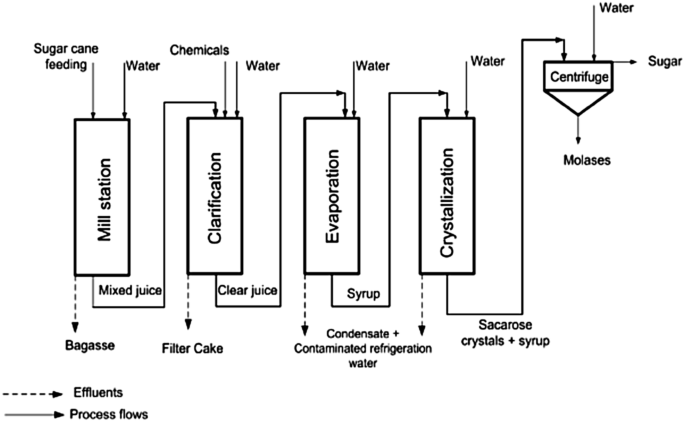Maximizar Rendimientos Y Minimizar Costos: Estrategias Avanzadas Para La Optimización Química Del Procesamiento De Azúcar De Caña
In the world of walking stick sugar processing, the quest of making best use of yields while simultaneously minimizing expenses stands as an awesome challenge that needs a tactical blend of sophisticated chemical optimization techniques. The ins and outs of this endeavor look into the core of effectiveness, where every component of the process plays a vital duty in achieving ideal results. By checking out the ins and outs of chemical evaluation, enzyme application, pH control, filtration, and distillation techniques, a landscape rich with chances for improvement and technology emerges. Amidst this complex internet of strategies lies the guarantee of unlocking untapped capacity and reinventing the very significance of sugar manufacturing. Cane Sugar Processing Chemicals.
Chemical Evaluation for Performance
Chemical evaluation plays an essential duty in improving the performance of sugar walking cane processing by providing essential understandings right into the structure and residential properties of the raw materials. By conducting detailed chemical evaluations on sugar walking stick samples, cpus can identify the exact focus of sucrose, glucose, fructose, and various other parts existing in the raw material. This details is crucial for optimizing the numerous stages of the sugar cane handling chain, from milling to formation.
Additionally, chemical analysis makes it possible for processors to recognize pollutants such as organic acids, healthy proteins, and minerals that can impact the top quality and yield of the final sugar item. By quantifying these impurities, processors can carry out targeted approaches to remove or minimize their impacts, eventually improving the general performance of the processing plant.
In addition, chemical analysis promotes the monitoring of procedure parameters such as pH, temperature, and viscosity, permitting cpus to make real-time adjustments to make sure optimum conditions for sugar extraction and formation. In general, an extensive understanding of the chemical structure of sugar walking cane is vital for taking full advantage of returns, reducing expenses, and keeping high item quality in the sugar manufacturing sector.

Enzyme Use for Increased Returns
With a strategic method to enzyme application, sugar walking stick cpus can substantially enhance their yields while keeping functional efficiency in the manufacturing procedure. Enzymes play an important duty in sugar cane handling by breaking down intricate carbohydrates right into simpler sugars, therefore raising the overall sugar extraction effectiveness. By including particular enzymes tailored to target the various parts of sugar cane, such as cellulose and hemicellulose, processors can enhance the launch of sugars throughout removal.
Enzyme usage provides the advantage of making best use of sugar yields from the raw product while decreasing the power and sources needed for handling. With careful selection and application of enzymes, sugar walking stick processors can enhance their operations to achieve higher yields and productivity.
Ph Control for Optimum Handling
Enzyme utilization for raised returns in sugar walking stick processing lays the foundation for dealing with the vital element of pH control for optimal handling performance. Preserving the suitable pH level throughout numerous phases of sugar walking cane processing is important for making best use of returns and lessening costs. pH control is particularly critical during the extraction and explanation processes. In the extraction stage, preserving the appropriate pH aids in accomplishing efficient sucrose removal from the walking stick. Managing the pH during clarification help in the precipitation of contaminations and see this non-sucrose elements, leading to a purer last item. Additionally, pH influences the task of enzymes associated with the break down of macromolecules, influencing the general performance of the process. By meticulously checking and adjusting the pH levels at different handling actions, sugar cane cpus can improve sugar recovery prices, reduce chemical usage, and maximize the overall manufacturing process. Reliable pH control not only improves the high quality of the last product however additionally adds to sustainable and cost-efficient sugar walking other cane processing operations.
Advanced Filtering Methods
Carrying out sophisticated filtration methods in sugar walking stick processing enhances the efficiency and pureness of the end product with fine-tuned separation methods. By integrating advanced filtering technologies, such as membrane purification and turned on carbon purification, sugar walking stick processing plants can achieve greater degrees of sugar healing and improved quality assurance.

Turned on carbon purification is one more sophisticated method that helps in the removal of colorants, off-flavors, and recurring pollutants from sugar walking stick products. By making use of triggered carbon's adsorption buildings, this purification technique enhances the clarity and taste of the sugar, satisfying the high standards required by consumers and sector guidelines.
Energy-Efficient Distillation Approaches
Energy-efficient distillation approaches are necessary for optimizing the sugar walking stick handling market's Continued power consumption while preserving high-quality item criteria. Conventional purification procedures can be energy-intensive, resulting in higher manufacturing prices and ecological effects (Cane Sugar Processing Chemicals). Executing energy-efficient distillation methods, such as vacuum cleaner purification or molecular distillation, can substantially minimize energy requirements while improving overall procedure effectiveness
Vacuum purification involves decreasing the stress within the distillation system, which lowers the boiling factor of the fluid mixture being processed. This decrease in boiling point lowers the power needed for vaporization, leading to power financial savings compared to conventional distillation techniques.
On the various other hand, molecular distillation uses brief course purification strategies under high vacuum cleaner problems to different substances based upon their molecular weight. This approach is particularly effective for heat-sensitive substances, as it operates at reduced temperatures, lowering power consumption and preserving product high quality.
Final Thought

Comments on “Advanced Cane Sugar Processing Chemicals: Boost Pureness and Taste”